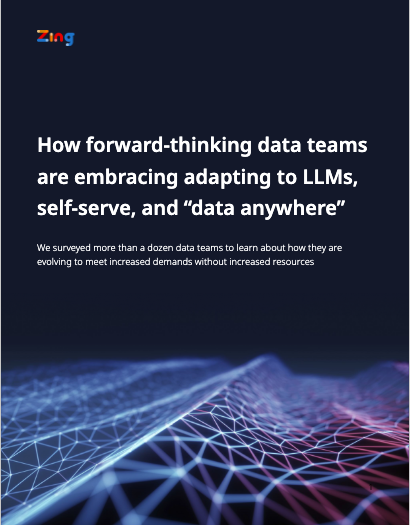
Not too long ago, cloud-based data solutions like Databricks, Clickhouse and Starburst helped teams to streamline data infrastructure setup, making it easier for organizations to capture data from various sources, ensuring its availability for further exploration and utilization. Compared to on-prem data storage, these cloud-based solutions has simplified data infrastructure management, reducing the time and effort required to establish robust data pipelines.
Operational analytics tools like Alteryx and dbt automated the flow of data: from creation, to manipulation, to storage. By automating data ingestion, extraction, transformation, and loading (ETL) processes, large volumes of data is kept readily available for analysis and decision-making. These tools also provide powerful data manipulation features, allowing users to cleanse, transform, and enrich data with ease. This helps data teams save time and reduce the risk of errors which enhances data accuracy.
Sitting on top of an abundance of data, companies now face the problem of maximizing the value of this data and focusing more on extracting insights and value from their data, enabling data-driven decision-making and empowering teams across the organization.

Employees across all departments of an organization typically depends on a centralized group of data analysts to provide them with factual information and statistics sourced from the organization’s database. These insights serve as evidence to support their hypotheses and decision-making processes. However, companies are presently facing a challenge in efficiently delivering data insights to their employees, leading to a bottleneck in the flow of information.
Data teams are facing difficulties in meeting the growing number of data requests within the expected time frame. Simply adding more data analysts to the team is neither cost-effective nor practical as a solution.
When there is a lack of clarity regarding the essential metrics of the business and of the request at hand, it requires data analysts to dig through the data, make assumptions, and enquire their colleagues, worsening productivity.
Analyst teams may also face an issue of distrust in the original captured data, due to unclear or missing data. This results in a rigorous validation process between analysts, data and business teams, before sharing findings with their requestors. This further prolongs the time required to service each request.

To tackle the above challenges, organizations are seeking to promote “data literacy,” which involves empowering all employees to independently access data and gain insights. Efforts include by educating the less technical employees on how they can use BI tools, and providing access to these tools. However, implementing this initiative has posed its own set of challenges.
The number of licenses for business intelligence tools that can be distributed across the organization is constrained by cost and budget considerations. These tools often have a per-headcount billing structure, which makes it expensive for companies to ensure widespread accessibility. Providing a license to each employee becomes extremely expensive and infeasible due to these cost and budget limitations.
The distribution of sensitive data and any derived materials is often restricted based on a “need-to-know” basis due to data security concerns.
It is challenging to convince employees to take the additional time and effort required to pick up a new skill that does not directly contribute to their current domain. Significant investments in organizational resources are necessary to educate employees who lack the required skills and abilities to effectively utilize business intelligence tools.
To tackle the above challenges, a potential solution at a strategic level would involve introducing a self-service solution that is user-friendly and cost-effective to implement organization-wide. This solution would empower employees to independently access and understand data insights, allowing analytics resources to be redirected towards more intricate assignments.

Zing Data can help you bring data to all in your company. If the pointers in this article resonated with you and/or your company, Schedule a demo with us to find out how we can tackle your problems.
Check out our whitepaper, which contains insights from our interviews with over a dozen data teams at Fortune 500 companies and fast-growing start-ups. We cover other challenges that these teams are tackling, and the opportunities that they have set their sights on.
Available on iOS, Android, and the web
Learn how Zing can help you and your organization collaborate with data
Schedule Demo